ENT Conference 2021
ABOUT CONFERENCE 2021
EuroSciCon outspreads its warm welcome to all its participants to European Conference on Otolaryngology, ENT Conference 2021 scheduled on November 22-23, 2021, with a theme “Practical presentation of cutting edge concepts in Otorhinolaryngology”. EuroSciCon organizes International Events with Conferences, Meetings and Workshops on Medical, Pharma, Engineering, Science, Equipment and Business.
We gladly welcome attendees all around the world for the hearing of the leading recent innovations and inventions in the field of Ear, Nose and Throat Cures. This Conference will provide a forum for exchange of ideas and authoritative views by leading scientists, trade specialists and from the academicians of the best institutes from around the globe. Settled keynote speakers and well-known leading scientists and experts from around the globe will be expected to share their awareness and talk about various aspects related to various frontlines in the field of Treatment of Ear, Nose and Throat.
Our aspiration is to gather noble researchers, young scientists, academicians & industrialists to meet, discuss and share the knowledge that’s still more to be discovered. Gain and grab the knowledge. Conferences and symposia provide infinite opportunities to strengthen the community and are also the collective body of knowledge. We cordially cheer you to attend and contribute to one of the major events of 2021 on the field of Otorhinolaryngology. The session will reveal the present and future features in the field of Treatment of Ear, Nose and Throat Disorders which are the need of the hour for instant and outlined treatment.
Ear, Nose and Throat:
Otorhinolaryngology is a surgical subspecialty in medicine that deals with conditions of the ear, nose, and throat (ENT) and related structures of the head and neck. Doctors who study in this area are called otorhinolaryngologists, otolaryngologists, ENT doctors, ENT physicians, or head and neck surgeons. Patients pursue treatment from an otorhinolaryngologist for diseases of the ear, nose, throat, base of the skull, and for the surgical running of cancers and benign tumors of the head and neck.
Who & Why??
Otolaryngology, ENT Conference 2021 Conference brings together the experts from all the aspects to meet and discuss the future of ENT and Status of treatment for the disorders in today’s world to thrive and endure with a better health. The conference will bring together Directors, Doctors, Director of Laboratories, Universities, Industries, Delegates, ENT Investigation specialists, Investigators, Post-Doctoral Fellows, ENT Research and Analytical Laboratories, Clinical Fellows, Students, ENT Research companies, ENT Healthcare Organizations, Market Research and Consulting Firms, Pharmaceutical Companies, Medical device specialist and all the interested members willing to enhance and update the understanding on Ear, Nose & Throat Disorders.
Scope & Importance:
According to the Focuses of Poison Control and Counteractive activity (CDC) around 12.1% of the adult masses or 28.5 Million people are come across consistent sinusitis, making it more by and large than diabetes and asthma. This high unavoidability of never-ending sinusitis is driving the enthusiasm for ENT drugs, for instance, endoscopic sinus medical procedures, utilitarian endoscopic sinus medical process (FESS), and inflatable sinus extension. In this way, creating control of sinusitis is depended upon to move the improvement of ENT contraptions feature. Otorhinolaryngology has a chiefly rich history, with basic accomplices and characters ever. The unique strength was one of the first to use neighborhood anesthesia for process, pioneer in prescriptions with devices that recuperated hearing and the use of amplifying focal point in medical procedures. Couple of restorative abilities had persevered through a similar number of changes and sensible advances in these last a very long time as Otolaryngology had, with the upside of merging advancements, for example, endoscopy, radiology, little scale medical procedure and evidence development.
SESSIONS/TRACKS
Track 1: Otology
Otology is a division of medicine which studies normal and pathological anatomy and physiology of the ear as well as their diseases, diagnosis and treatment. Otologic surgery usually alludes to medical procedure of the center ear and mastoid connected to chronic otitis media, for example, tympanoplasty, or ear drum medical procedure, ossiculoplasty, or medical procedure of the hearing bones, and mastoidectomy. Otology likewise contains careful treatment of conductive hearing misfortune, for example, stapedectomy surgery for otosclerosis. Neurotology, an interrelated field of prescription and subspecialty of Otolaryngology, is the study of diseases of the internal ear, which can prompting hearing and balance disorders. Neurotologic surgery generally alludes to surgery of the inside ear or medical procedure that implicates entering the inner ear with risk to the hearing and balance organs, including labyrinthectomy, cochlear embed medical procedure, and surgery for lumps of the temporal bone, for example, intracanlicular acoustic neuromas.

Track 2: Pediatric ENT
Pediatrics ENT deals with children having sicknesses, for example, tonsillitis, sinusitis and ear infections (otitis media) utilizing the most recent procedures for medical treatment and the most advanced techniques for surgical treatment. Pediatric Otorhinolaryngology is to deal and spread data concerning prevention, cure and care of otorhinolaryngology diseases in babies and children because of developmental, degenerative, infectious, neoplastic, traumatic, social and mental causes.

Track 3: Otolaryngology
Otorhinolaryngology is a surgical subspecialty inside medicine that deals with the ear, nose, and throat (ENT) and related structures of the head and neck. Specialists who deals with this area are called otorhinolaryngologists, otolaryngologists, ENT specialists, ENT surgeons, or head and neck specialists. Patients look for treatment from an otorhinolaryngologist for diseases of the ear, nose, throat, base of the skull, and for the malignant growths and benign tumors of the head and neck.

Track 4: Septoplasty
Septoplasty is a therapeudic surgery done to fix the nasal septum, the segment between the two nasal cavities. Preferably, the septum should rundown the focal point of the nose. When it turns into one of the holes, it narrows that cavity and delay airflow. Deviated nasal septum or "crooked" interior nose can happen at childbirth or as the result of damage or other injury. If the wall that functions as a separator of both sides of the nose is tilted en route for one side at a degree greater than 50%, it may cause trouble in breathing. Frequently the inferior turbinate on the contrary side enlarges, which is marked compensatory hypertrophy. Abnormalities of the septum can prompt nasal obstruction.

Track 5 :Tonsillectomy/Adenoidectomy
Tonsillectomy is a surgery wherein together palatine tonsils are removed from a break in the side of the pharynx called the tonsillar fossa. The technique is performed because of repetitive occurrence of acute tonsillitis, rest medical procedure for obstructive sleep apnea, nasal aviation route hindrance, diphtheria transporter state, snoring, or peritonsillar abscess. For Children, tonsillectomy is normally joined with an adenoidectomy, which is the avoidance of the adenoid. The amalgamation of these two systems is called an "adenotonsillectomy" or "T&A". Adenoidectomy is special in adults in whom the adenoid is a lot slighter than in kids and once in a while causes issues.

Track 6: Sinus Surgery
Endoscopic Sinus Surgery is most commonly used to treat chronic rhinosinusitis only after all non-surgical treatment choices, for example, anti-toxins, topical nasal corticosteroids, and nasal lavage with saline arrangements have been depleted. Chronic rhinosinusitis (CRS) is a inflamatory state in which the nose and at least one sinus convert swollen and meddle with bodily fluid waste. It tends to be brought about by anatomical aspects, for example, a deviated septum or nasal polyps (developments), as well as infection. Side effects include trouble in breathing through the nose, swelling and pain around the nose and eyes, postnasal drainage down the throat.
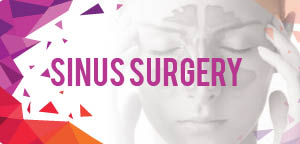
Track 7 :Tonsillitis
Tonsillitis is inflammation of the tonsils. It is a type of pharyngitis Symptoms may be sore throat, fever, extension of the tonsils, gulping problem, and large lymph nodes around the neck. Tonsillitis is most common cause by a viral, with about 5% to 40% of cases brought about by a bacterial infection. At the point when activated by the bacterium group A streptococcus, it is referred as strep throat. Once in a while microorganisms, for example, Neisseria gonorrhoeae, Corynebacterium diphtheriae, or Haemophilus influenzae might be the cause. Typically the infection is spread among individuals through the air. A scoring framework, for example, the Centor score, may help separate possible origins. Affirmation might be by a throat swab or fast strep test.
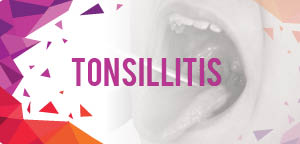
Track 8 :Otitis Media
Otitis media is a bunch of inflammatory diseases of the middle ear. The two fundamental types are Acute Otitis Media (AOM) and Otitis Media with Effusion (OME). AOM is An infection of sudden beginning that generally gives ear pain. In small kids this may bring about drawing at the ear, crying, and poor sleep. Decreased eating and a fever may likewise be present. OME is regularly not associated with side effects. Once in a while a sentiment of culmination is described. It is defined as the presence of non-infectious fluid in the middle ear for other than three months. Chronic suppurative otitis media (CSOM) is middle ear inflammation of more prominent than about fourteen days that outcomes in scenes of discharge from the ear. It might be an obstruction of acute otitis media. All three might be related with hearing loss. The hearing loss in OME, because of its chronic nature, may disturb a child's capacity to learn.

Track 9: Myringotomy
A myringotomy, occasionally called by other names, is a surgical procedure in which a tiny incision is shaped in the eardrum (tympanic membrane) to relieve pressure caused by excessive buildup of fluid, or to gutter pus from the middle ear. A tympanostomy tube is implanted into the eardrum to keep the middle ear aerated for a lengthy time and to prevent reaccumulation of fluid. Without the insertion of a tube, the incision usually heals naturally in two to three weeks. Depending on the type, the tube is either certainly extruded in 6 to 12 months or removed during a minor procedure.

Track 10: Ear Disorders
An ear malady is regularly a bacterial or viral contamination that effects the center ear, the air-filled space behind the eardrum that contains the slight vibrating bones of the ear. Youngsters are more probable than grown-ups to get ear adulterations. Ear diseases every now and again are difficult in view of aggravation and development of liquids in the center ear. Since ear diseases often clear up without anyone else, management may start with overseeing torment and observing the issue. Ear disease in newborn children and serious cases when all is said in done frequently need anti-infection solutions. Long haul issues recognized with ear contaminations — persevering liquids in the center ear, steady diseases or successive contaminations — can cause hearing disputes and different genuine complexities. In this tracks we practice a portion of the issue identified with time issue, for example, Acute outer otits, Prechondritis pinna-Cauliflower ear, Congenital changes Microtia, Atresia and Otomycosis.
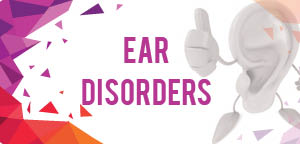
Track 11: Epiglottitis
Epiglottitis is tenderness of the epiglottis—the flap at the base of the tongue that keeps food from going into the trachea (windpipe) Symptoms are commonly rapid in onset and include trouble swallowing which can result in drooling, deviations to the voice, fever, and an increased breathing rate.As the epiglottis is in the upper airway, swelling can interfere with breathing. People may thin forward in an effort to open the airway.As the condition worsens stridor and bluish skin could occur.

Track 12: Salivary Gland Pathology
There are 3 paired chief salivary glands in humans (the parotid gland, the submandibular gland, and the sublingual gland), as well as about 800-1000 insignificant salivary glands in the oral mucosa of the mouth. The parotid gland is located in front of the ear, and it secretes its ordinarily serous saliva via the parotid duct (Stenson duct) into the mouth, usually opening unevenly opposite the maxillary second molar. The submandibular gland is placed medial to the angle of the mandible, and it drains its mixture of serous and mucous saliva via the submandibular duct (Wharton duct) into the mouth, commonly opening in a punctum located in the bottom of mouth. The sublingual gland is situated below the tongue, in the floor of the mouth. It drains its typically mucous saliva into the mouth via about 8-20 ducts which open beside the plica sublingualis (a fold of tissue under the tongue).
The function of the salivary glands is to secrete saliva, which has a lubricating purpose, which protects the oral mucosa of the mouth through eating and speaking.Saliva also contains digestive enzymes (e.g. salivary amylase) and has antimicrobial action and turns as a buffer. Persons with reduced salivary flow or hyposalivation repeatedly suffer from dry mouth or xerostomia, which can result in severe dental caries (tooth decay) as a end of the loss of the protective effects of saliva.

Track 13: Rhinitis
Rhinitis, also known as coryza, is irritation and tenderness of the mucous membrane inside the nose. Common indications are a stuffy nose, runny nose, sneezing, and post-nasal drip. The most common kind of rhinitis is allergic rhinitis, which is regularly triggered by airborne allergens such as pollen and dander. Allergic rhinitis may cause other symptoms, such as sneezing and nasal itching, coughing, headache] fatigue, malaise, and perceptive impairment.The allergens may also affect the eyes, causing watery, reddened, or itchy eyes and puffiness nearby eyes. The inflammation results in the generation of large amounts of mucus, commonly making a runny nose, as well as a stuffy nose and post-nasal drip. In the case of allergic rhinitis, the inflammation is caused by the degranulation of post cells in the nose. When mast cells degranulate, they discharge histamine and other chemicals, starting an inflammatory process that can cause indications outside the nose, such as fatigue and malaise.
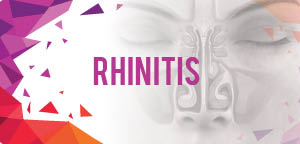
Track 14: Laryngitis
Laryngitis is infection of the larynx (voice box). Symptoms often include a hoarse voice and may include fever, cough, pain in the front of the neck, and worry swallowing . Laryngitis is categorised as acute if it persists less than three weeks and chronic if symptoms last more than three weeks.Acute cases generally occur as part of a viral upper respiratory tract infection. Other infections and trauma such as from coughing are other bases. Long-lasting cases may occur due to smoking, tuberculosis, allergies, acid reflux, rheumatoid arthritis, or sarcoidosis. The underlying tool involves irritation of the vocal cords.

Track 15: Tympanoplasty
Tympanoplasty is the surgical operation made for the reconstruction of the eardrum (tympanic membrane) and/or the minor bones of the middle ear Tympanoplasty is classified into five different types,Type 1 involves healing of the tympanic membrane alone, when the middle ear is normal. A type 1 tympanoplasty is identical to myringoplasty.Type 2 includes repair of the tympanic membrane and middle ear in spite of slight defects in the middle ear ossicles.Type 3 involves removal of ossicles and epitympanum when there are huge defects of the malleus and incus. The tympanic membrane is restored and directly connected to the head of the stapes.Type 4 describes a repair when the stapes foot plate is movable, but the crura are mislaid. The resulting middle ear will only involve of the Eustachian tube and hypotympanum.Type 5 is a repair involving a immobile stapes footplate.

Track 16: Laryngology
It is a branch of medicine that compacts with disorders, diseases and injuries of the vocal apparatus, especially the larynx. Mutual conditions addressed by laryngologistsinclude vocal fold nodules and cysts, laryngeal cancer, spasmodic dysphonia, laryngopharyngeal reflux, papilloma, and speech misuse/abuse/overuse syndromes.
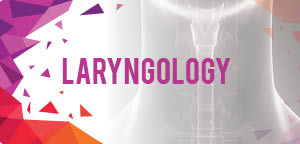
Track 17: Tinnitus
Tinnitus the awareness of sound in the absence of actual external sound-represents a symptom of an underlying condition rather than a single disease. Several models have been proposed to explain the mechanisms underlying tinnitus. Tinnitus, the noise can be intermittent or constant, and is very loud. Tinnitus is often related with hearing loss, it does not cause the loss, nor does a hearing loss cause tinnitus. People with tinnitus experience no effort hearing, and in a few cases they even become so sensitive to sound that they must take steps to muffle or mask exterior noises. Prolonged exposure to loud sounds is the most mutual cause of tinnitus. Up to 90% of people with tinnitus have certain level of noise-induced hearing loss. The noise causes lasting damage to the sound-sensitive cells of the cochlea, a spiral-shaped organ in the inner ear. A single exposure to a sudden enormously loud noise can also cause tinnitus. This track deals some of the most significant topic which includes: Chronic sensorineural tinnitus, Tinnitus from sound revelation, Pharmacological treatment and Behavioral treatment, Electrical stimulation and Vascular firmness of the auditory nerve.

Track 18: Anesthesia In Ear, Nose and Throat Surgery
Acute pain might occur due to trauma, surgery, infection, disruption of blood circulation, or many other conditions in which tissue injury occurs. In a medical setting, pain improvement is desired when its warning function is no longer needed. Besides educating patient comfort, pain therapy can also reduce harmful physiological significances of untreated pain. Children account for almost one-third of all patients undergoing ear, nose and throat (ENT) surgery. Procedures array from simple day-case operations, such as myringotomy, to complex airway reconstruction surgery accepted in specialist centres. This track defines the anaesthetic management of some of the commonly performed paediatric ENT procedures, comprising adenotonsillectomy, oesophagoscopy, and middle ear surgery.

Track 19: Obstructive Sleep Apnea (OSA)
Obstructive Sleep Apnea utmost common type of sleep apnea and is caused by complete or partial obstructions of the upper airway. It is categorized by repetitive episodes of shallow or paused breathing during sleep, despite the effort to breathe, and is usually associated with a decrease in blood oxygen saturation. Sleep apnea is a sleep disorder characterized by gaps in breathing or periods of shallow breathing during sleep. In the most mutual form this follows loud snoring. There may be a choking or snorting sound as breathing restarts. As it disrupts regular sleep, those affected are often sleepy or tired during the day. In children it may cause hitches in school or hyperactivity. There are three forms of sleep apnea, obstructive (OSA), central (CSA), and a grouping of the two. OSA is the most common form. Risk factors for OSA comprise being overweight, a family history of the condition, allergies, and enlarged tonsils. In OSA, breathing is interrupted by a impasse of airflow, while in CSA breathing stops due to a lack of effort to breathe. People with sleep apnea are frequently not aware they have it. Often it is picked up by a family associate. Sleep apnea is often detected with an overnight sleep study.
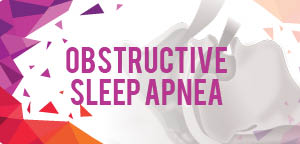
Track 20: Rhinology and Allergy
Rhinology expresses as the study of nose, including the sinuses. Rhinology alarms itself with medical and surgical diseases of the nasal passages as well as paranasal sinuses. It is fetching more important after the starter of nasal endoscopes. Allergies, also known as allergic diseases, are a number of conditions caused by hypersensitivity of the immune system to somewhat in the environment that usually causes little or no tricky in most people. These illnesses include hay fever, food allergies, atopic dermatitis, allergic asthma, and anaphylaxis. Indications may include red eyes, an itchy rash, runny nose, shortness of breath, or swelling. Allergies are mutual. In the developed world, about 20% of people are exaggerated by allergic rhinitis; about 6% of people have at least one food allergy.

MARKET ANALYSIS
The world ENT devices market has perceived a stable growth over the past several years. Genuine European locales are foreseen to oppose developing people crisis in coming years inciting to extended ENT and lung diseases that will drive the arcade advancement.
The market for ENT is foreseen to end up predisposed by growing rates of ENT and lung ailments generally speaking, for example, perpetual obstructive pneumonic diseases (COPD), sinusitis and otitis media, extending affinity for smoking and mechanical activities provoking to less prominent frameworks, for instance, radio repeat and operated instruments. WHO (World Wellbeing Association) reports that COPD is the fourth driving purpose behind death worldwide and is hinge upon to hold third position by 2020 and it was represented that 64 million people were facing COPD worldwide in the year 2004.
The ENT strategies market is expected to register a CAGR of around 6.4% during the forecast period. Ear, nose and throat (ENT) devices are special tools used for detection, therapy or surgery of any disorders related to the ear, nose or throat.
The global ENT devices market size is predictable to reach USD 23.1 billion by 2022, according to a new report by Grand View Research, Inc., expanding at a CAGR of 5.0% during the forecast period. Rising geriatric population and growing prevalence of ENT related disorders are the primary factors stoking the growth of the market.
DO YOU REQUIRE A VISA ?
Note: EuroSciCon Ltd. will not be processing the visa for the participants of the conference. The individual is solely responsible for getting their visa by themselves.
Singapore: Visa Requirements:
Depending on the purpose of your travel to Singapore, there are different types of visas that will apply to the occasion. Keeping in view of increased security measures, we would like to request all the participants to apply for Visa as soon as possible.
Please note: For security purposes, letter of invitation from EuroSciCon Ltd. will be sent only to those individuals who had registered for the conference. Once your registration is complete, please contact request a personalized letter of invitation.
Before applying for a Singapore tourist visa, please keep the below points in mind:
1. Indian passport holders can apply for a Singapore tourist visa that allows a stay for maximum period of 30 days with a validity of 2 years.
2. Similar to other country rules, even for Singapore, you should ensure that your passport is valid for 6 months from the date of entry in Singapore.
3. it’s a multiple entry visa which means that in the given visa validity you can travel multiple times and you won’t have to re-apply for a Singapore tourist visa.
4. If you are holding any old passport, it is safe to enclose the same with the application form.
5. Two recent coloured passport size photographs to be placed along the visa form (35mm X 45mm, 80% face close up, matte finish,white background only). The colour of your top must be in contrast to the white background. One photograph to be pasted on the Singapore tourist visa form and signed across. The second photograph should be attached with a gem clip along with the form. The photograph should not be older than 3 months.
6. In case you have more than 4-5 hours in between your connecting flights, you can opt for a free Singapore tour by registering yourself at the Changi Airport for the same. This is only applicable if your halt is less than 8 hours, otherwise you'd need a transit visa.
7. Apart from this, applicants should also have sufficient funds for the period of stay in Singapore along with confirmed return flight tickets.
10 things to know before you get a Singapore tourist visa online:
1. Download the Singapore tourist visa form online and complete it with information and signature.
2. Ensure that your passport is within a validity of 6 months from the date of arrival in Singapore.
3. A confirmed return air ticket with the tour itinerary is necessary.
4. A covering letter from the applicant mentioning the reason of travel and dates of travel, addressed to ‘The Embassy of Singapore /The Consulate General of Singapore’.
5. A leave letter from the applicant’s company on the company letterhead.
6. Please ensure that all the documents are in English. If not, then official translations of the documents should also be attached.
7. If the applicant is residing on any other address than mentioned on the passport, then the residential proof copy should also be attached. Two government authorised address proofs with the same address need to be attached.
8. If you are a first time traveller to Singapore, then there is a need to attach income tax papers of last 3 years along with bank statements of last 3 months.
9. It will be good to attach the confirmed bookings of your hotel in Singapore, although it is not a mandate.
10. Moreover, the consulate has the right to ask for additional documents as deemed necessary.
Citizens of all countries not included in Assessment Level I and Assessment Level II lists are allowed a maximum stay of 30 days without a visa in Singapore, except the holders of the following passports who are allowed to stay for 90 days:
Nationals of Assessment Level I and II countries do not require a visa to transit through Singapore Changi Airport as long as they fulfil the following requirements:
- have an onward ticket,
- remain in the transit area,
- have their luggage checked to their final destination,
- do not clear immigration to enter Singapore, and,
- Are not travelling on a low-cost airline (except for passengers travelling on Scoot with Scoot-thru and passengers traveling on Tigerair with Tigerconnect).
Nationals of certain Assessment Level I countries may enter Singapore under the Visa Free Transit Facility.
Visa Free Transit Facility (VFTF)
Nationals of India
Nationals of India may enter Singapore without a visa for 96 hours if they are in transit to or from any third country by air, when possessing a valid visa or long-term residence permit with validity of at least one month issued by Australia, Canada, Germany, Japan, New Zealand, Switzerland, United Kingdom or United States.
Single journey visas issued by these eight countries are also acceptable for transit, but if using the VFTF on the return journey (i.e. after the single journey visa has been used) the traveller must travel directly from the visa-issuing country and directly back to the home country, and they must have not returned to their home country since the single journey visa was last used.
Nationals of India are only allowed to use the VFTF once in their itinerary (either on the forward or the return journey but not both). They must also enter and depart by air.
Assessment Level I Countries
Holders of normal passports or travel documents issued by the following countries and territories may obtain a visa online through a local Singaporean contact or a strategic partner in Singapore, or at the
nearest Singaporean diplomatic mission or one of its authorized visa agents outside Singapore. Visa requirement does not apply to holders of non-ordinary passports of these countries except North Korea.
|
|
- Holders of Hong Kong Document of Identity for Visa Purposes
- Holders of Macao Special Administrative Region Travel Permit
Assessment Level II Countries
Citizens of the following countries must obtain a visa in advance. They may apply for a visa through a local Singaporean contact or a strategic partner in Singapore, or at the nearest Singaporean diplomatic mission or one of its authorized visa agents outside Singapore.
|
|
- Holders of temporary passports issued by the United Arab Emirates
- Holders of Refugee travel documents issued by Middle-East countries
- Stateless persons (holder of alien's passport, such as certificate of identity and refugee travel document, is considered as stateless by ICA, regardless the nationality appearing on the holder's travel document)
Non-ordinary passports
Other than non-ordinary passport holders of Assessment Level I countries (except North Korea), visa requirement does not apply to holders of diplomatic or official/service passports of Bangladesh, Jordan, Tunisia and of diplomatic passports of Saudi Arabia and Morocco.
APEC Business Travel Card
Holders of passports issued by the following countries who possess an APEC Business Travel Card (ABTC) containing the "SGP" code on the reverse that it is valid for travel to Singapore can enter visa-free for business trips for up to 60 days.
ABTCs are issued to nationals of:
|
|
LEARN MORE
List of Universities, Societies and Jobs in ENT Worldwide
Universities in U.S.A
Harvard University | Stanford University | ENT Conferences | Massachusetts Institute of Technology | Otolaryngology Conferences | University of California, Los Angeles |Yale University | Otolaryngology Conferences |Texas A&M University | Head and Neack Surgery Conferences | |New York University | Pennsylvania State University | Rhinology Conferences | Columbia University | University of Texas at Austin | Otology Conferences |University of Southern California | ENT Meetings | University of Notre Dame | Cornell University | Boston University | Purdue University |Liberty University | Ohio State University | Princeton University | Duke University | Head and Neck Cancer Conferences |University of California, Berkeley| ENT Conferences U.S.A | University of Washington | University of Pennsylvania |Otolaryngology Conferences Asia | Johns Hopkins University |Northwestern University|University of Michigan | ENT Meetings| University of Florida | Vanderbilt University |Brown University | Otology Conferences| University of Phoenix | Louisiana State University | University of Chicago |
Universities In Europe
University of Oxford | ENT Conferences |University of Cambridge | Imperial College London | Otolaryngology Conferences | Ludwig Maximilian University of Munich | Head and Neck Surgery Conferences |Technical University of Munich | University of Edinburgh | University of Manchester | Otology Conferences | University of Amsterdam | Delft University of Technology | Rhinology Conferences | Humboldt University of Berlin |University of Copenhagen | Otology Conferences | Heidelberg University | Otolaryngology Conferences | Utrecht University | University of Bologna | Head and Neck Cancer Conferences |University of Warwick | University of Bristol | ENT Conferences U.S.A | ENT Meetings | University of Groningen | University of St Andrews | Leiden University | University of Zurich | Lund University | University of Glasgow | University of Oslo | Otolaryngology Conferences Asia|Erasmus University Rotterdam | University of Helsinki | ENT Meetings |University of Vienna | University of Barcelona | Ghent University | ENT Conferences |Technical University of Denmark| University of Twente | University of Nottingham |
Universities in Asia
National University of Singapore | ENT Conferences |The University of Hong Kong | Tsinghua University | Otolaryngology Conferences | Peking University | Head and Neck Surgery Conferences | Seoul National University | University of Tokyo | Rhinology Conferences | The Hong Kong University of Science and Technology | Otology Conferences | Chinese University of Hong Kong | Head and Neck Cancer Conferences|Kyoto University | Fudan University | ENT Conference U.S.A |Zhejiang University | City University of Hong Kong | Otolaryngology Conferences Asia | Shanghai Jiao Tong University | ENT Meetings | Pohang University of Science and Technology| Sungkyunkwan University | ENT Conferences | Korea University | Nanjing University | Otology Conferences |Osaka University | University of Malaya | Yonsei University |Tohoku University | ENT Meetings | National Taiwan University | Nagoya University | University of Tsukuba | Kyushu University | University of Science and Technology of China | Hokkaido University | Otolaryngology Conferences Asia |Keio University |Waseda University | Universitas Indonesia |
Societies In U.S.A
American Academy of Otolaryngology–Head and Neck Surgery | ENT Conferences | American Society of Pediatric Otolaryngology | Otolaryngology Conferences |Pan-American Association of Oto-Rhinolaryngology | Head and Neck Surgery Conferences| Otology Conferences |Texas Association of Otolaryngology Head and Neck Surgery | Head and Neck Cancer Conferences | Rhinology Conferences | Texas Association of Otolaryngology Head and Neck Surgery | ENT Conferences U.S.A | Georgia Society of Otolaryngology | Otolaryngology Conferences Asia |North Carolina Society of Otolaryngology and Head and Neck Surgery | ENT Meetings | American Laryngological Association | Otology Conferences | | Minnesota Academy of Otolaryngology | ENT Conferences | Canadian Society of OTOLARYNGOLOGY - Head and Neck Surgery | ENT Meetings | American Head and Neck Society | Rhinology Conferences|European Rhinologic Society |
Societies in Europe
European Federation of Oto-Rhino-Laryngology Societies | ENT Conferences |European Rhinologic Society | Otolaryngology Conferences | European Academy of Otology & Neuro-Otology | Head and Neck Surgery Conferences | European Laryngological Society | Rhinology Conferences | European Academy of Allergy and Clinical Immunology | Otology Conferences | European Head & Neck Society | ENT Conferences U.S.A |The European Society of Pediatric Otorhinolaryngology | ENT Meetings |
Societies in Asia
Asian Society of Head & Neck Oncology | ENT Conferences | The New Zealand Society of Otolaryngology | Otolaryngology Conferences | Otorhinolaryngology Conferences | Head and Neck Surgery Conferences | Asia-Oceania Association of Otolaryngology | Rhinology Conferences | ASHNO (Asian Society of Head and Neck Oncology)| Otology Conferences |Otorhinolaryngology Conferences USA | Association for Research in Otolaryngology | Head and Neck Cancer Conferences | ENT Conferences | ENT Conferences U.S.A | Asia-Pacific Society of Thyroid Surgery| ENT Conferences USA | Association of Otolaryngology Administrators | Otolaryngology Conferences Asia | Association of Medical Doctors of Asia| ENT Meetings|Association of Academic Departmentsof Otolaryngology| ENT Conferences| Otolaryngology Conferences | Rhinology Conferences | ENT Conferences 2018 |
Otorhinolaryngology Societies In Africa
ENT Conferences 2018 |ENT Conferences |The South African Society of Otorhinolaryngology| Otolaryngology Conferences | Otorhinolaryngology Conferences | Head and Neck Surgery Conferences | Otorhinolaryngology Society of Nigeria | Rhinology Conferences | ENT Conferences | Otology Conferences | South African Society of Otolaryngology| Head and Neck Cancer Conferences |Otorhinolaryngology Conferences USA | ENT Conferences U.S.A| Pan African Federation of Otorhinolaryngological Society| Otolaryngology Conferences Asia |Tanzania ENT Society (TENTS)| ENT Meetings |The South African Head and Neck Oncology Society| Otolaryngology Conferences | ENT Meetings | Search Results| Otology Conferences| Laryngology & Rhinology Section - Royal Society of Medicine| ENT Conferences USA | Rhinology Conferences |
ENT Jobs
ENT Surgeon| ENT Conferences | ENT Specialists | Otolaryngology Conferences| Consultant ENT Surgeon | Head and Neck Surgery Conferences |Audiologist | Rhinology Conferences |Consultant ms / DNB ENT Surgeon| Otology Conferences |ENT , Anesthesiologist | Consultants-ENT | Head and Neck Cancer Conferences |Professor - ENT Surgeon | Otology Technologist | ENT Conferences U.S.A |Surgical Otologist| Transplant Specialist | Otolaryngology Conferences Asia | Pediatric ENT Surgeon| ENT Specialist| ENT Meetings |Assistant Lecturer | Otorhinolaryngology Conferences | ENT Conferences | Trauma Research Specialist | Rhinology Conferences |Clinical Physician| Medical Director-otolaryngology | Otology Conferences | Senior Consultant for General otolaryngology| Head and Neck Surgeon | Resident doctor for vascular Surgery| Otolaryngology Conferences |Speech language pathologist | Otorhinolaryngology Conferences USA |
